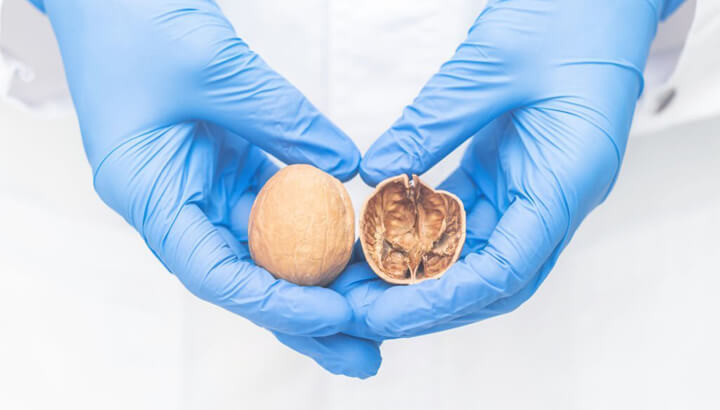
Testicular cancer accounts for about 1% of all cancers in men worldwide. Though it accounts for a very small percentage of all cancer cases in men, it is the most common cancer among younger men. With early diagnosis and effective treatment, the overall five-year survival rate is 97%.
Testicular cancer begins when healthy cells in a testicle undergo mutation (change) and grow out of control, forming a mass called a tumor. Testicles are two small egg-shaped glands located below the penis and are held inside a sac of loose skin called the scrotum. They produce the male hormone testosterone, and sperms, the male cells needed for reproduction.
The testicles are made up of many types of cells which on mutation can develop into one or more types of cancer. Around 95% of testicular cancers are germ cell (produce sperms) testicular cancers. Two main subtypes of testicular germ cell tumors or cancers are:
Signs and symptoms of testicular cancer often appear at an early stage. An enlarged testicle or a small lump is the first sign of testicular cancer. Other important symptoms are:
As the cancer advances to different body parts, one may experience:
Risks For Developing Testicular Cancer: Testicular cancer is more likely to occur in people with the following risk factors:
When a person experiences any signs and symptoms, the testicle doctor specialist may initially, review the medical history and conduct a detailed physical examination. If any suspicious pea-sized lump on testicle or mass is detected during the physical examination, the following tests are recommended for a detailed diagnosis.
Testicular cancer staging is based on the American Joint Committee on Cancer (AJCC) TNM system. It provides detailed information about:
If you are diagnosed with testicular cancer, the healthcare team would decide the treatment based on the overall health, the type of testicular cancer, and the stage at which the cancer is diagnosed. The cancer care team would also discuss the possible side effects, risks, and benefits of each treatment.
The treatment options for testicular cancer are:
Surgery: Surgery is the main treatment for nearly all types and stages of testicular cancer. It involves the removal of the testicle through an incision made in the groin.
Inguinal orchiectomy involves the removal of the entire testicle, the procedure is called orchiectomy. The testicle is then examined under a microscope to determine the type of cancer and its stage. If the cancer is aggressive and more likely to metastasize, a retroperitoneal lymph node dissection (RPLND) may be performed.
Retroperitoneal Lymph Node Dissection (RPLND) is the surgical procedure to remove the lymph nodes of the retroperitoneum (space behind the peritoneal membrane that lines the abdominal cavity). This is a complex and long operation; however, a laparoscopic approach may be considered to reduce post-surgery complications.
The common side effects of surgery are reactions to anesthesia, excess bleeding, blood clots, infections, and erectile dysfunction.
Testicular Cancer Chemotherapy: Chemotherapy involves the use of potent anti-cancer drugs to destroy cancer cells. These drugs enter the bloodstream and travel throughout the body to destroy the cancer cells. For testicular cancers, chemotherapy is used in the following roles:
Chemotherapy is administered in several cycles followed by a rest period to allow the body time to recover. The patients may receive a single or combination of drugs for better results. Chemotherapy cycles may begin soon after the orchiectomy is performed.
Possible side effects of chemotherapy include nausea and vomiting, loss of appetite, hair loss, mouth sores, diarrhea or constipation, increased chance of infections, and fatigue.
Radiation therapy: Radiation therapy involves the use of high-energy radiation (such as gamma rays or x-rays) to slow down the growth of cancer cells or destroy it. It usually begins after the orchiectomy procedure.
Radiation therapy is used in the following cases:
For testicular cancers, high-energy beams are delivered at the site of the tumor through an external source (external beam radiation therapy). It is an outpatient procedure that is usually given over several weeks.
Common side effects of radiation therapy may include fatigue, nausea, and diarrhea. Some men may also experience redness, blistering, and peeling at the delivery site.
There are no preventive measures for testicular cancer as there are no known lifestyle risk factors. Routine screening for men with cryptorchidism, family history, and other non-modifiable risk factors can help in early diagnosis.
Testicular cancers usually have an excellent prognosis. The prognosis depends on the stage at the time of diagnosis, the type of cancer, and the overall health of the patient. Men with stage I and II cancers are likely to be cured with surgery and radiation therapy. Even men with the most advanced case have a fair average five-year survival rate.